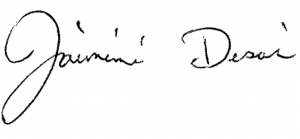(Please enjoy this updated version of my weekly commentary published January 13, 2022 from the POWR Stocks Under $10 newsletter).
Before we dig into the Good/Bad/Ugly discussion, let’s do a quick recap of the past week.
Since last week, the S&P 500 is down about 1%. However, this fails to reflect the tremendous volatility we experienced.
Stocks plunged to start the week and were down by more than 2% at one point. However, this intense selling led to a big rally with the S&P 500 climbing by 3.6% in a couple of days. Naturally, this led to some hope that a bottom was in.
These hopes were quickly extinguished as the market gave up the bulk of these gains in the next couple of sessions with the most likely catalyst being hawkish comments from Fed officials and a hot CPI report.
Now, let’s move on to the main focus of this week’s commentary.
Right now, the market is in an interesting place that defies easy definition. My best attempt would be to say that 20% of the market is in a brutal bear market with little sign of hope, 20% of the market continues to trend higher and are benefitting from inflation and higher rates, and 60% of the market is kind of doing nothing – just trading in a wide, sloppy range.
So, my attempt to define this dynamic is through the good/bad/ugly paradigm.
What’s Good?
As mentioned in the intro, our portfolio is outperforming the market by a significant degree. Today, we were only down 0.18%, while the Nasdaq was down by more than 2%. Our portfolio is up by nearly 5% for the year, while the major averages are down between 3% and 7%.
It is a bit unusual, because usually our portfolio has much higher beta, meaning that it will underperform in down markets and outperform in up markets.
The most likely reason is that we have completely avoided the speculative, high-multiple stocks which were market darlings for much of 2020 but have become dogs in 2022. Instead, we have overallocated to sectors that continue to trend higher like housing, materials and EM stocks.
What’s Bad ?
There’s a shakiness to the market. Inflation is entrenched and rising and is leading to a more aggressive and hawkish Fed.
The stock market, on a short or intermediate-term timeframe, could certainly be collateral damage in its efforts to curb inflation. As we’ve mentioned before, low-priced stocks are very sensitive to swings in liquidity and bearish market conditions, so this bears watching.
In fact, I’m quite confident that if the market keeps moving lower, it would only be a matter of time before it started to affect the stocks in our portfolio. Yes, even the materials, housing, and EM stocks would suffer drawdowns.
I’m confident that they would make higher highs at some point down the road, but I would rather be proactive and in a position to take advantage of such a drawdown.
What’s Ugly
Growth stocks. Specifically, the speculative, high-multiple ones. Just take a look at the Ark Innovation ETF (ARKK) to get an idea of what is going on. It’s down 10% over the last 2 days, 15% since the start of the year, and is now down nearly 50% since its peak in February 2021.
Maybe this sounds hyperbolic, but I’m getting some real dot-com vibes from the price action in these stocks in addition to the relentless selling. Some have jokingly called these stocks – the Ponzi sector.
Like a lot of jokes, I think it’s funny because it has some truth in it. These stocks need constant inflows to justify their lofty valuations. And like a ponzi, once it unwinds, there really is no bottom.
Many of these companies are years away from profitability with high multiples even after this steep drawdown. There’s no floor in terms of cash flow or earnings or dividends which would entice value investors to step in.
Greed took these stocks to unimaginable heights, and fear is now taking them to levels that were unimaginable a year ago.
We deserve kudos for sidestepping this catastrophe, but I’m also cognizant that these types of extreme selloffs can trigger market-wide corrections. Investors and funds who own these positions in size and/or with leverage are forced to sell.
Often, in order to meet redemptions, they have to sell positions that are totally disconnected to these, leading to pain across the market in stocks that have nothing to do with the ponzi sector.
So, this is my major focus. Minimizing collateral damage, in the event that the growth sell-off accelerates, and being in a position to take advantage of a dip in the stocks and sectors that I am enamored of.
Going back to the dot-com analogy, in hindsight, the bust was a generational opportunity to buy stocks in energy/materials/ EM stocks. These had been outperforming prior to the crash but were pulled lower as risk appetites compressed. However, this ultimately provided the ideal entry point to get long.
What Does This Mean?
Turning theory into practice, I believe that these developments are meaningful enough to shift our portfolio to a slightly more defensive stance and get more vigilant in terms of managing risk and taking profits when appropriate.
I believe these steps are appropriate for any type of portfolio but even more germane for us given that we are focusing on one of the riskier parts of the market.
What To Do Next?
If you’d like to see more top stocks under $10, then you should check out our free special report:
What gives these stocks the right stuff to become big winners?
First, because they are all low priced companies with explosive growth potential.
But even more important, is that they are all top Buy rated stocks according to our coveted POWR Ratings system and they excel in key areas of growth, sentiment and momentum.
Click below now to see these 3 exciting stocks which could double (or more!) in the year ahead.
All the Best!
Jaimini Desai
Chief Growth Strategist, StockNews
Editor, POWR Stocks Under $10 Newsletter
Want More Great Investing Ideas?
SPY shares . Year-to-date, SPY has declined -2.16%, versus a % rise in the benchmark S&P 500 index during the same period.
About the Author: Jaimini Desai

Jaimini Desai has been a financial writer and reporter for nearly a decade. His goal is to help readers identify risks and opportunities in the markets. He is the Chief Growth Strategist for StockNews.com and the editor of the POWR Growth and POWR Stocks Under $10 newsletters. Learn more about Jaimini’s background, along with links to his most recent articles. More...
More Resources for the Stocks in this Article
| Ticker | POWR Rating | Industry Rank | Rank in Industry |
| SPY | Get Rating | Get Rating | Get Rating |
| .INX | Get Rating | Get Rating | Get Rating |
| DIA | Get Rating | Get Rating | Get Rating |
| IWM | Get Rating | Get Rating | Get Rating |
| QQQ | Get Rating | Get Rating | Get Rating |






